50 Years Ago, the First American Walked in Space, And He Didn’t Want to Stop

Bruce McCandless II tries out an untethered space walk during 1984’s Space Shuttle mission. (Photo: NASA/WikiCommons)
June 3rd, 1965 was a fine day for a spacewalk.
As America’s Gemini IV spacecraft curved into its third orbit, astronaut Ed White pushed through the hatch and began his first stint of extravehicular activity (EVA). Tethered to the spaceship’s belly by an eight-foot golden cord, White tumbled around like a kid in a ball pit, taking pictures of the far-off ocean and propelling himself to and fro with his oxygen-jet gun. In recordings, his excitement is palpable, even through static.
“I feel like a million dollars,” he said. “This is the greatest experience; it’s just tremendous.”
White swam around in space for around half an hour, “walking” from Hawaii to the Gulf of Mexico and waving at the base in Houston along the way. There was just one problem—when the time came, he didn’t want to go back inside. Ground control chided him: “We’ve been trying to talk to you for a while here… back in, come on.”
“It’s the saddest moment of my life,” said White, as he clambered through the hatch.
With that, White became the first American to walk in space. He also became one of the first humans to show signs of what is now known as “space euphoria”—an out-of-this-world happiness, only accessible beyond the atmosphere.
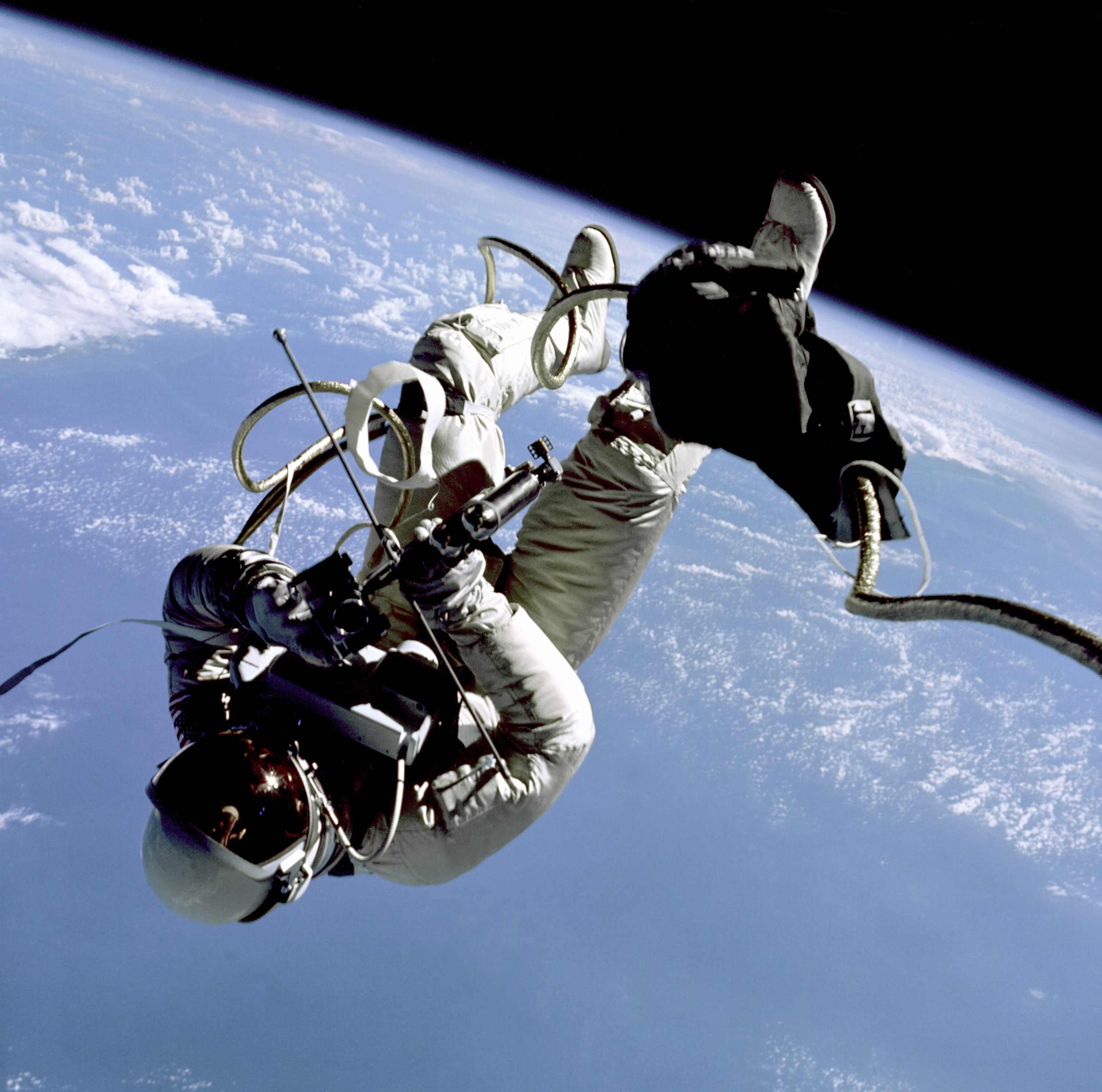
Ed White in 1965, enjoying the first American spacewalk a little too much. (Photo: NASA/WikiCommons)
Space travel is cramped and grueling, with physical discomfort, high stress, and long periods of boredom. But all that goes away, it turns out, as soon as they go outside.
Extreme landscapes often conjure up extreme emotions. Some aviators live for “the break-off phenomenon,” in which high altitude and adrenaline combine to generate “feelings of detachment, exhilaration, and exalted power.” Divers know to beware the “rapture of the deep,” an underwater high caused by over-absorption of nitrogen. Inuit hunters who sail out alone on glassy oceans report a condition called “kayak angst,” characterized by dizziness, trembling, and delusions that the kayak is flooding.
Nearly everybody gets a little acrophobic when looking over a wide-enough expanse, likely because, as visual cues recede, our balance gets thrown off. But the causes of space euphoria remain a mystery—even though its consequences can be life-changing and vast.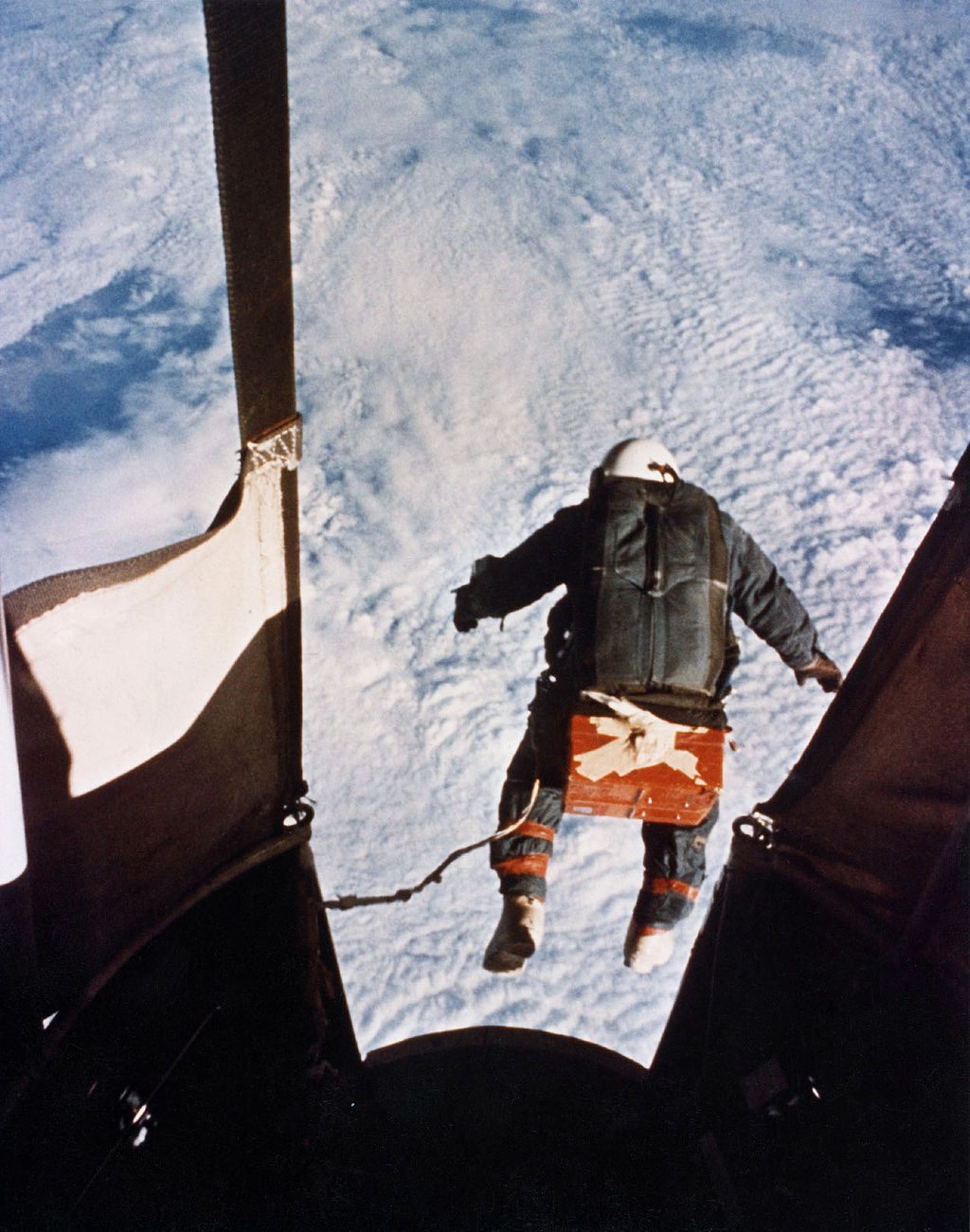
Colonel Joe Wittinger, a high-altitude pilot, parachute-jumps 102,800 feet out of Excelsior III in 1979. Wittinger was accused of suffering from the break-off phenomenon during an earlier jump attempt, after he replied to a request to descend with “COME AND GET ME.” (Photo: US Air Force/WikiCommons)
Usually it’s all fun and games. Alexey Leonov, the Soviet astronaut who in 1965 beat the Americans to the spacewalk by a few months, reported feeling “excellent and in a cheerful mood, and reluctant to leave free space” as he bounced around Voskhod 2—this despite the fact that he may have had a suicide pill with him in case he got stuck out there, writes Mary Roach in her book, Packing for Mars.
Ed White’s, too, was a rather mild case. “It was no big deal at all,” remembers Jim McDivitt, who flew Gemini IV as Ed walked outside. “He was just having a ball out there…. there was euphoria.” (Good thing, because McDivitt was under strict orders to cut White loose if he passed out from lack of oxygen, as dragging him back through the hatch would have been too dangerous).
In a 1987 book, author Frank White coined the term “the overview effect” for the high that astronauts kept reporting. He made it into an argument for continued space exploration, saying that leaving the atmosphere made humans “true citizens of the universe,” and later compared the astronauts themselves to knights of Camelot.
But once in a while, the distraction of euphoria puts astronauts in real danger. In his memoir, An Astronaut’s Guide to Life on Earth, Colonel Chris Hadfield describes a close call during a 2001 repair mission to the International Space Station. It was Hadfield’s first spacewalk, and as he maneuvered over to his work site, he was gobsmacked by his new working environment:
“I check behind me, to be sure I haven’t accidentally activated my backup tank of oxygen, and that’s when I notice the universe. The scale is graphically shocking… it’s like being engrossed in cleaning a pane of glass, then you look over your shoulder and realize you’re hanging off the side of the Empire State Building, Manhattan sprawled vividly beneath and around you. Intellectually, I’d known I was venturing out into space, yet still the sight of it shocked me, profoundly… you look up from your task and the universe rudely slaps you in the face.”
Five hours later, he started to feel that slap—his left eye began tearing up. But Hadfield didn’t want to leave his sublime intergalactic workspace, and so, in defiance of protocol, he said nothing. Without the pull of gravity, the tears pooled in his eye, and soon he could barely see at all.
“In the space of just a few minutes,” he writes, “I’ve gone from 20/20 vision to blind. In space. Holding a drill.”
Space euphoria had silenced Hadfield’s training long enough to cause actual trouble, which Hadfield distilled into a now-famous phrase: “Houston, I have a problem.” They got him back into the ship in one piece.
At other times, space euphoria’s repercussions have followed astronauts all the way back to Earth. Edgar Mitchell, who walked on the moon for over nine hours during the Apollo 14 mission, says he was changed completely by the new view of his home planet.
“You develop an instant global consciousness, a people orientation, an intense dissatisfaction with the state of the world, and a compulsion to do something about it,” he told People in 1974. “From out there on the moon, international politics look so petty. You want to grab a politician by the scruff of the neck and drag him a quarter of a million miles out and say, ‘Look at that, you son of a bitch’.”
On the way home, this feeling surged up to an existential pitch: in an interview with the extragalactic astronomer Stephan Martin, Mitchell describes “a visceral moment of knowing that the molecules in my body, the molecules in the spacecraft, and the molecules in my partners had been prototyped and manufactured in an ancient generation of stars. It was not an intellectual realization, but a deep knowing that was accompanied by a feeling of ecstasy and oneness that I had never experienced in that way before.”
Mitchell subsequently devoted the rest of his life to “planet-wide consciousness-raising,” and now runs a nonprofit called the Institute of Noetic Sciences that funds research about ESP, UFOs, remote healing, and other parapsychic phenomena.
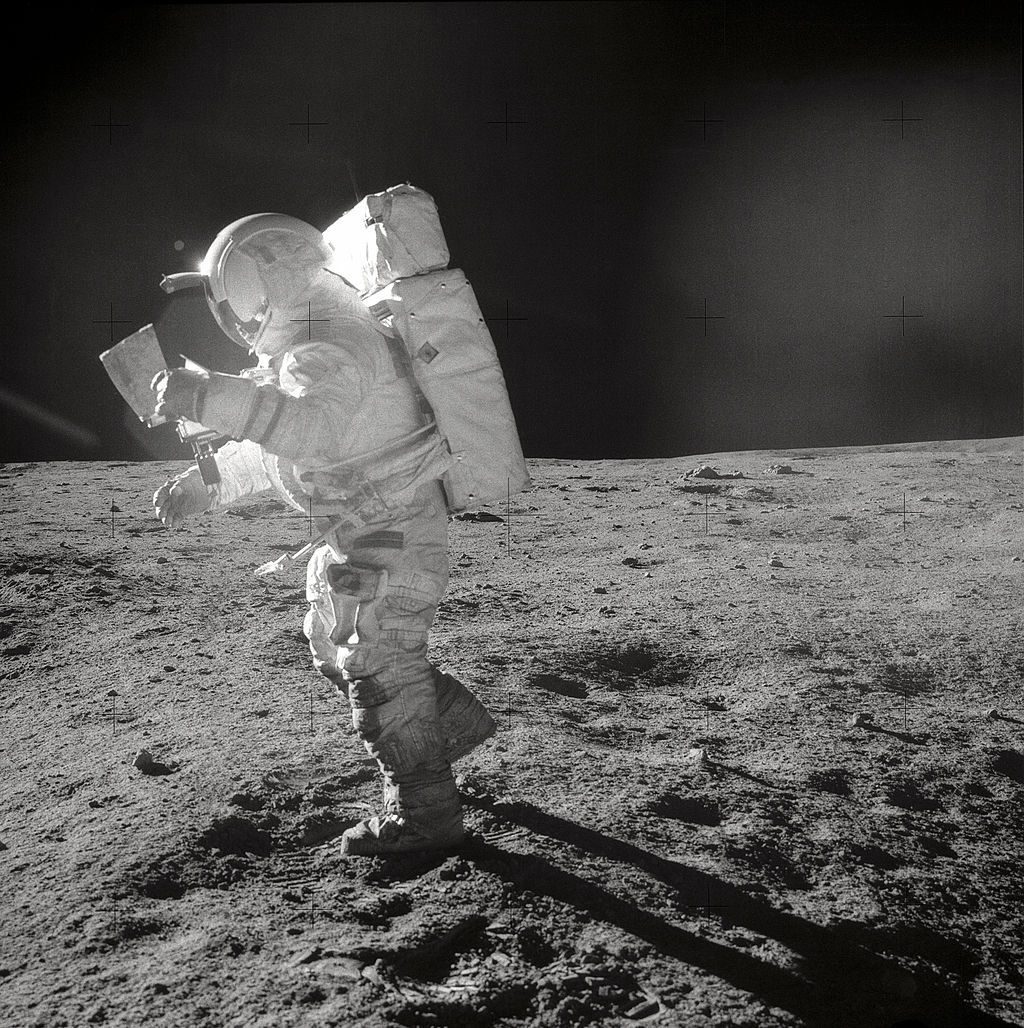
Ed Mitchell studies a map during his life-changing 1971 moonwalk. (Photo: NASA/WikiCommons)
Contemporary explorers, too, come back giddy and purposeful. “It sort of reduces things to a size that you think everything is manageable,” space tourist Anousheh Ansari told space.com in 2007. “All these things that may seem big and impossible? We can do this. Peace on Earth – no problem.”
So where does space euphoria come from? Is it chemical, caused by some giddy cocktail of adrenaline, oxygen deprivation, and antigravity acrobatics? Is it aesthetic, a natural response to space-sized sensory overload, and made more potent by the previous days spent cooped up in a capsule? Is it some kind of spiritual response, a way to keep our individualism in check? Or is exploration programmed into us, deep enough that expanding our horizons, even into the Final Frontier, just feels good?
“That was the most natural feeling,” Ed White told Jim McDivitt, once he had settled back inside the Gemini. “Yeah, I know,” McDivitt said. “You looked like you were in your mother’s womb.”
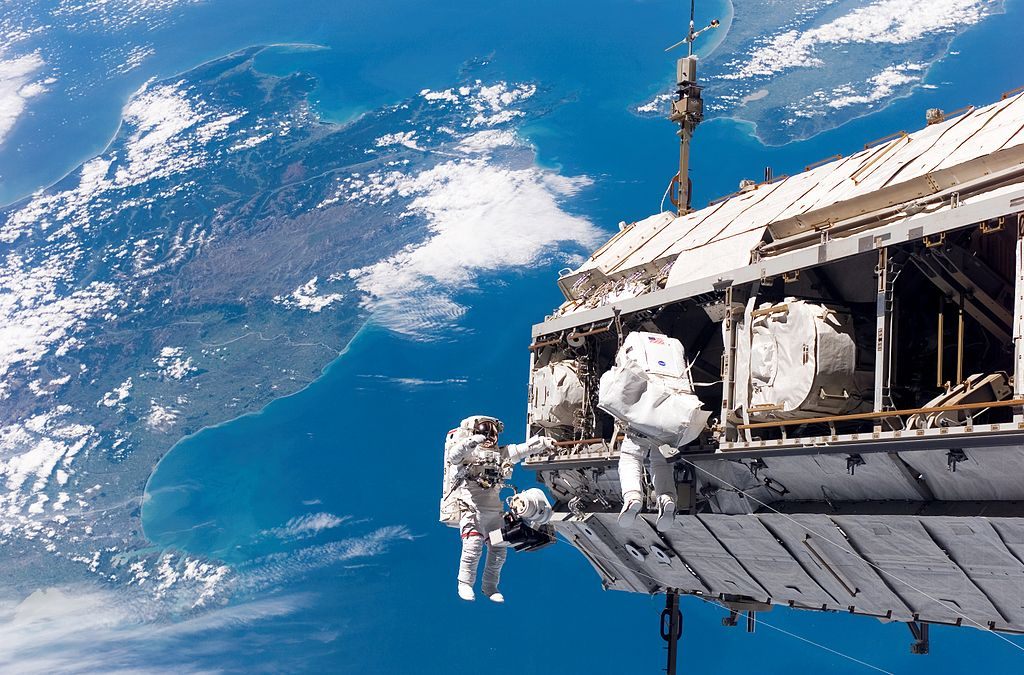
Robert L. Curbeam, Jr. and Christer Fuglesang float over New Zealand while working on the International Space Station in 2006. (NASA/WikiCommons)
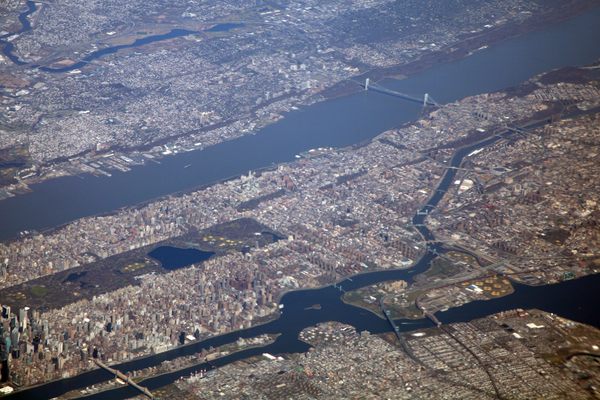








Follow us on Twitter to get the latest on the world's hidden wonders.
Like us on Facebook to get the latest on the world's hidden wonders.
Follow us on Twitter Like us on Facebook